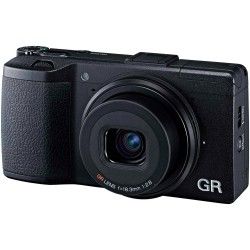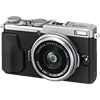Main
Model
Price
Advantages
launch
Announced
Body type
Camera subcategory
Sensor
Effective pixels
Max resolution
Sensor size
Sensor type
Processor
Image ratio w:h
Other resolutions
Sensor photo detectors
Image
ISO
White balance presets
Custom white balance
Image stabilization
Uncompressed format
Boosted ISO (minimum)
Boosted ISO (maximum)
JPEG quality levels
Photography features
Minimum shutter speed
Maximum shutter speed
Aperture priority
Shutter priority
Manual exposure mode
Built-in flash
Flash range
External flash
Flash modes
Continuous drive
Self-timer
Metering modes
Exposure compensation
AE Bracketing
WB Bracketing
Maximum shutter speed (electronic)
Subject / scene modes
Screen / viewfinder
Articulated LCD
Screen size
Screen dots
Touch screen
Screen type
Live view
Viewfinder type
Videography features
Resolutions
File Format
Microphone
Speaker
Optics & Focus
Focal length (equiv.)
Optical zoom
Maximum aperture
Autofocus
Manual focus
Normal focus range
Macro focus range
Number of focus points
Digital zoom
Physical
Weight (inc. batteries)
Dimensions
Environmentally sealed
Battery
Battery details
Battery Life (CIPA)
Storage
Storage types
Storage included
Connectivity
USB
HDMI
Microphone port
Headphone port
Wireless
Wireless notes
Remote control
Other features
Orientation sensor
GPS
Timelapse recording
Samples
Videos
Summary
The GR II highest resolution of 4928 x 3264 pixels (16 megapixels) is better than the X70 highest resolution of 4896 x 3264 pixels (16 megapixels). The GR II is equipped with bigger sensor compared to the X70: APS-C (23.7 x 15.7 mm) versus APS-C (23.6 x 15.6 mm). It is the most significant advantage of this model because large sensor allows you to produce pictures of the better quality. The GR II provides more number of white balance presets - 10. This specification gives you more control over colour. The X70 offers more number of focus points than the GR II: 77 vs 9. More focus points means less risk of losing focus lock when following a moving subject.
The X70 is equipped with tilting display that will allow you to make high quality selfie photos. The GR II display is better as it has more number of screen dots 1,230,000 in comparison to 1,040,000 dots of the X70 screen. The higher dot count display is better for reviewing images on your camera. The X70 is produced with a touch screen.
The X70 battery life is better in compare to the GR II battery life. According to CIPA standards the photographer will be able to take 330 shots with the X70 and only 320 with the GR II. The Ricoh GR II weighs 251g that is 89g less than the weight of the X70.
Taking into account the above differences the Ricoh GR II becomes the best buy. Check the lowest price on Amazon.


